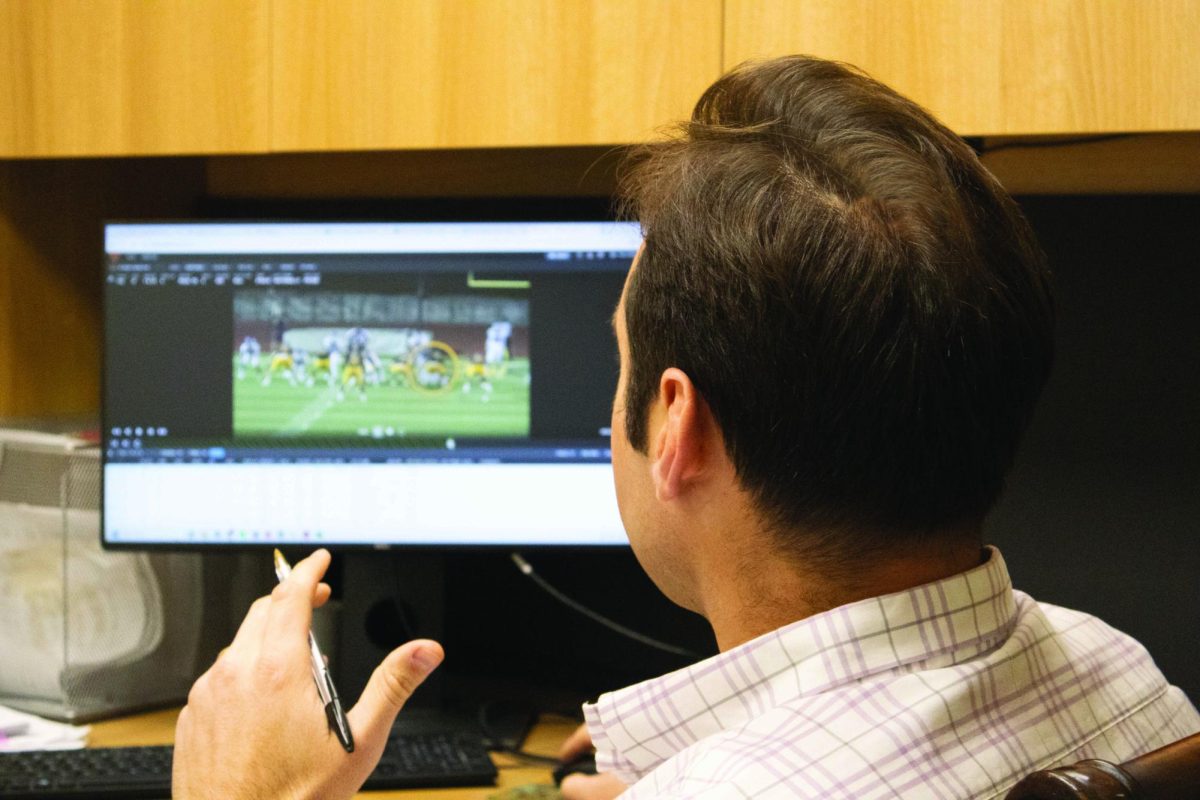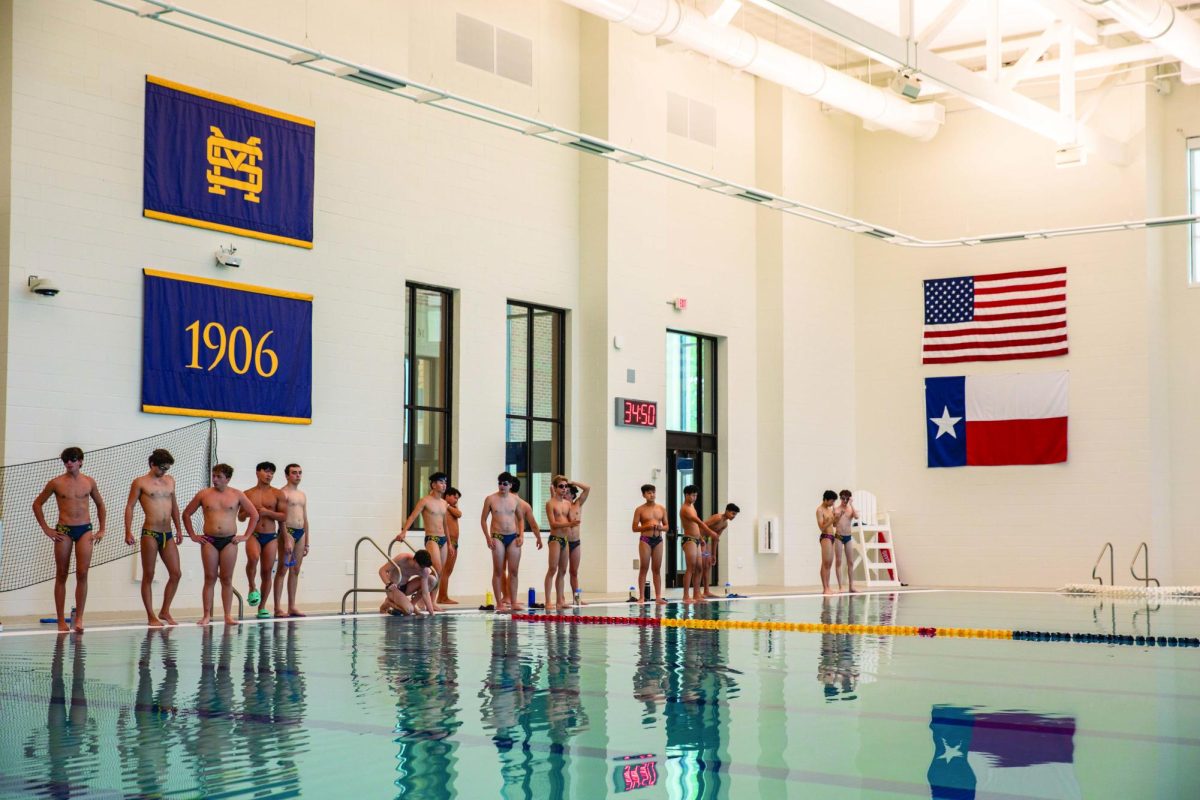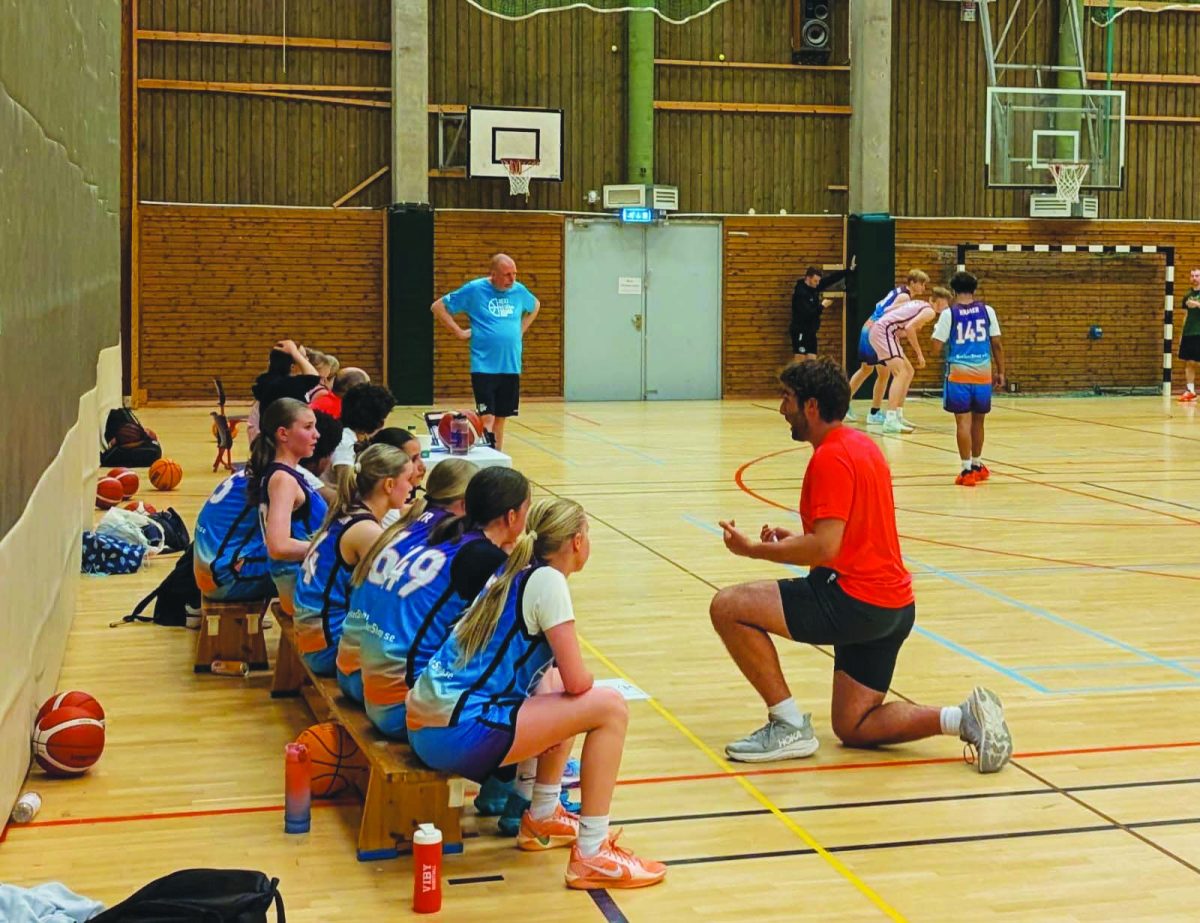In the first game of the Lions’ varsity football season this year, the team fell short by one point to the Fort Worth Country Day Falcons. After a furious fourth-quarter comeback, head varsity football coach Harry Flaherty elected to play for overtime instead of attempting a risky two-point conversion. While the attempt failed, Flaherty and the rest of the team lived with the choice.
In the final game of the Lions’ varsity football season, the team prevailed by one point against the rival Episcopal School of Dallas. This time, it was the Lions who shut down a two-point conversion while scoring four touchdowns with four successful extra points.
The science of late-game heroics is becoming increasingly scrutinized as decision-making technology advances. More detailed data collection tells a more complete story of each game, play by play.
No sport is an exact science, but the onus is now on coaches to find the balance between the numbers and their instincts.
Flaherty says analytics is a broad field with many subcategories, and that both the usage and depth of analytics varies with the level of the sport. For the varsity football team, Flaherty uses data to optimize each practice during the week leading up to Friday night games, and he has developed his analysis techniques over the course of his entire coaching career.
“We perform weekly and yearly ‘self-scouts’ that give us a breakdown of the schemes we have run and the success of those schemes,” Flaherty said. “We break down opponents’ film to determine their schematic tendencies against certain formations or in different situations. We analyze how many practice reps we got on certain schemes and concepts compared to how often we actually ran them in games.”
The Athletic, NBA and Basketball Business writer Mike Vorkunov, who covered the New York Knicks for more than three seasons, says that widespread understanding of advanced statistics will eventually reach the more casual tiers of the sports community.
“There is a lot more analysis based off of advanced stats and analytics than there used to be,” Vorkunov said. “The media has been more fluent in that stuff. But mostly, as teams have changed their approach to playing basketball and how it builds rosters, that has a trickle down effect on how the media understands basketball and covers the game.”
At the collegiate and professional level, physical measurables play a more important role. In categories such as height, weight, arm length, and speed, players are compared to existing professionals and probed for indicators of future success. Processes such as the NFL Draft and Pro Days allow scouts to both collect these metrics and see the prospect up close.
Recent developments in technology have driven the focus of sports analytics to coaching decisions. Flaherty has observed this trend both through personal experience and throughout the football community.
“What do the percentages say about attempting an onside kick?” Flaherty said. “What does the ‘card’ say about whether we should go for two in this situation? If we go for it on fourth down and don’t make it, what are the chances they score from this field position? As these types of charts and data sources have become more prominent, new careers have emerged as a result. I have had several college classmates and teammates combine their statistics and economics backgrounds with their athletic experiences to forge careers with professional sports teams.”
Vorkunov believes the lack of accessibility for sensitive information on professional teams is an issue for outside analysts. However, certain widely available sources of data have helped him through his career.
“Most of the analytics that teams use is tightly held and often doesn’t get beyond the team’s facility, and certainly does not go to the public,” Vorkunov said. “There are several public databases that are very good and helpful, like KenPom for college basketball and Darko and EPM for the NBA. I use that when I try to assess teams and players and sometimes might use it in stories or to guide stories or opinions.”
Flaherty says that, despite the technological progress of analytics, his use of data-based coaching tools is purely secondary to his personal coaching expertise and experience. When he came to the school, he observed that his approach closely mirrors the philosophy of Director of Admission and Financial Aid David Baker.
“(He) has very sophisticated systems and processes for analyzing and rating applicants, but he will also say, ‘We want to know what data we are ignoring when we make decisions,’” Flaherty said. “In other words, we are going to ultimately use instincts to pick the students we feel are best for the community, but we will be aware of the risk factors as we make these decisions. In football, I am a fan of data and analytics as helpful insights and context, but I do not make decisions purely based on the data.”
Vorkunov follows a similar philosophy in his field. He knows sports is not an exact science and believes context is a vital piece when it comes to analysis.
“Not all data is helpful, whether it’s because the statistics aren’t helpful or because they lack context,” Vorkunov said. “Stats should be part of the story you tell — you should not base whole stories on a statistic.”
Vorkunov is cautious about the future of analytics, and he believes that the current hype around the trend may not reflect the actual practical applications of sports data.
“There is still plenty that can be learned about defense and health and sports performance,” Vorkunov said, “and that’s likely where teams are putting their resources and hoping to next gain an edge. I don’t think it will ever be the only way that the media talks about players or how teams make their decisions.
Flaherty emphasizes the importance of balance between the numbers and his personal instincts, and the rest of his coaching staff follows a similar philosophy, including Defensive Coordinator Judd Garret, who scouted opponents and conducted analysis for the Dallas Cowboys.
“If you have a play call you like in a certain situation, you want to know whether it has been successful for you in previous situations,” Flaherty said. “You might still call a high-risk concept because you really like a certain matchup and have a good feel for your players’ confidence to execute, but you at least want to be aware you are taking a risk. I agree that ignoring analytics is detrimental, but being governed by it takes away coaching instincts, ability to read situations, and trust in certain players you believe are ready to execute a specific scheme in a given moment.”
Sports analytics surge in popularity
April 17, 2025
Categories:
Head football coach Harry Flaherty watches game film in his office, analyzing formations to improve the team’s game plan.
More to Discover
About the Contributors
Akash Manickam, Digital Managing Editor
Christopher Guffey, Head Writer








